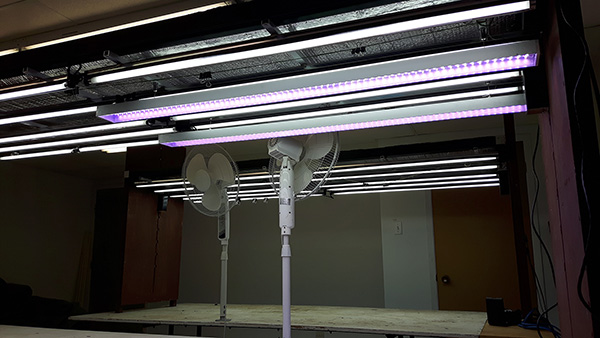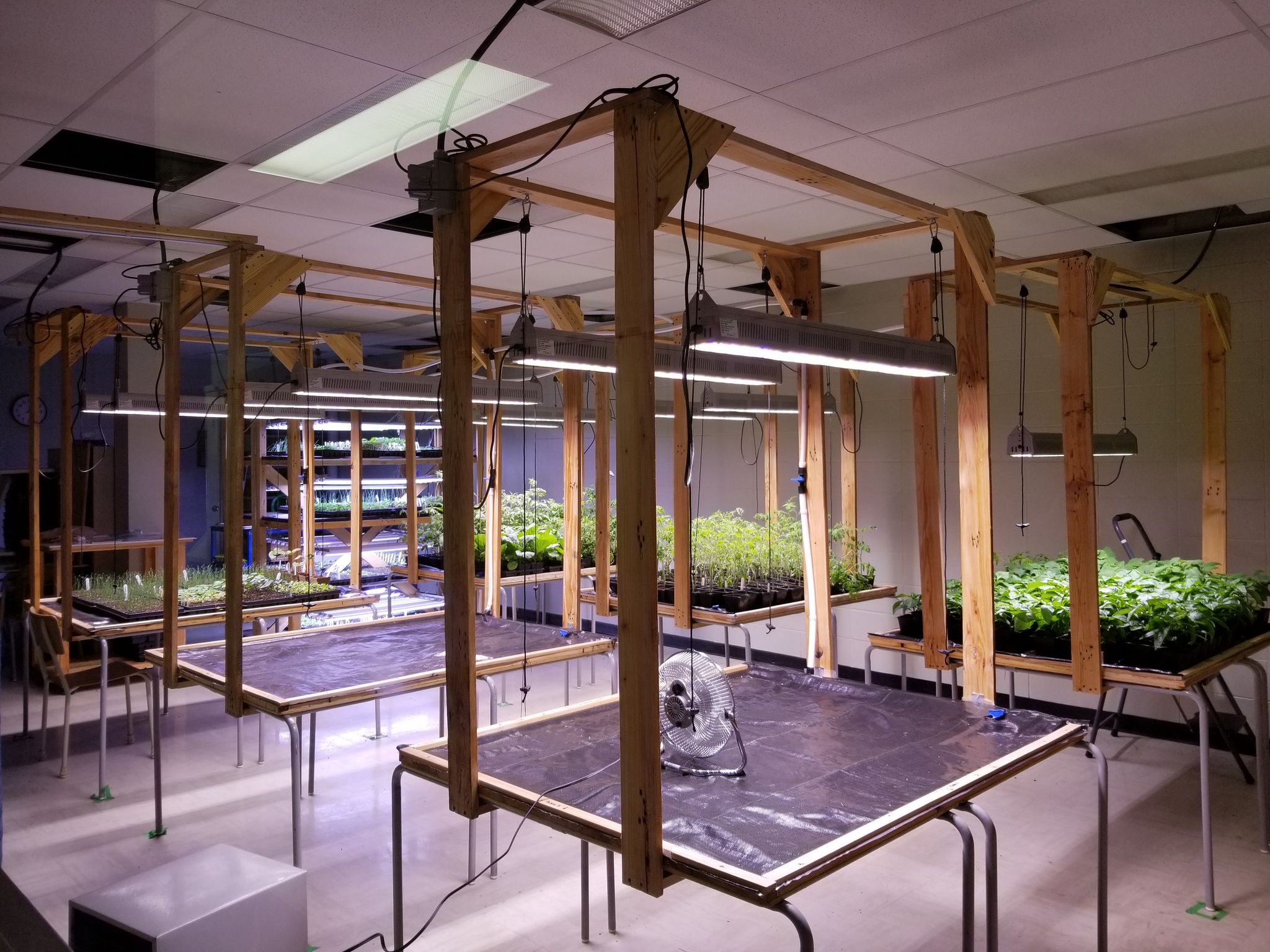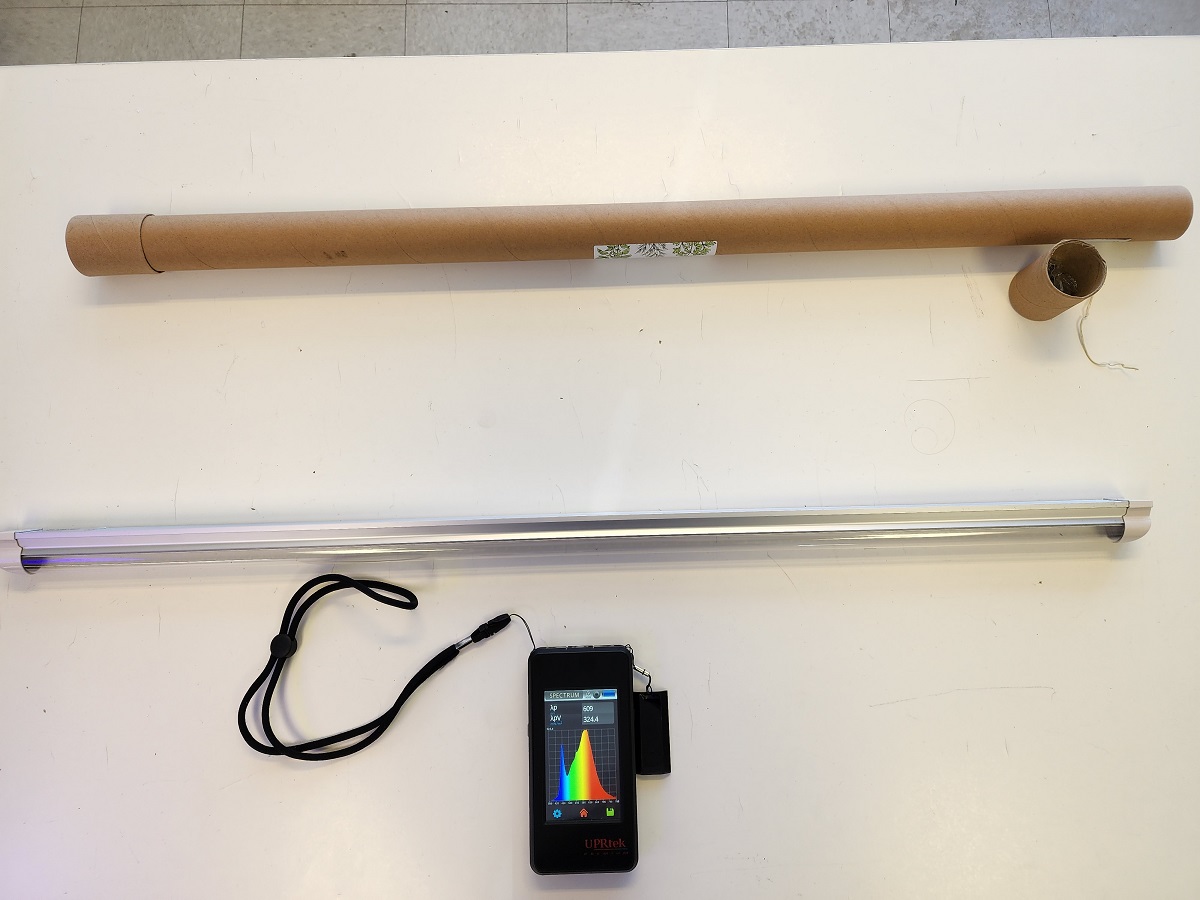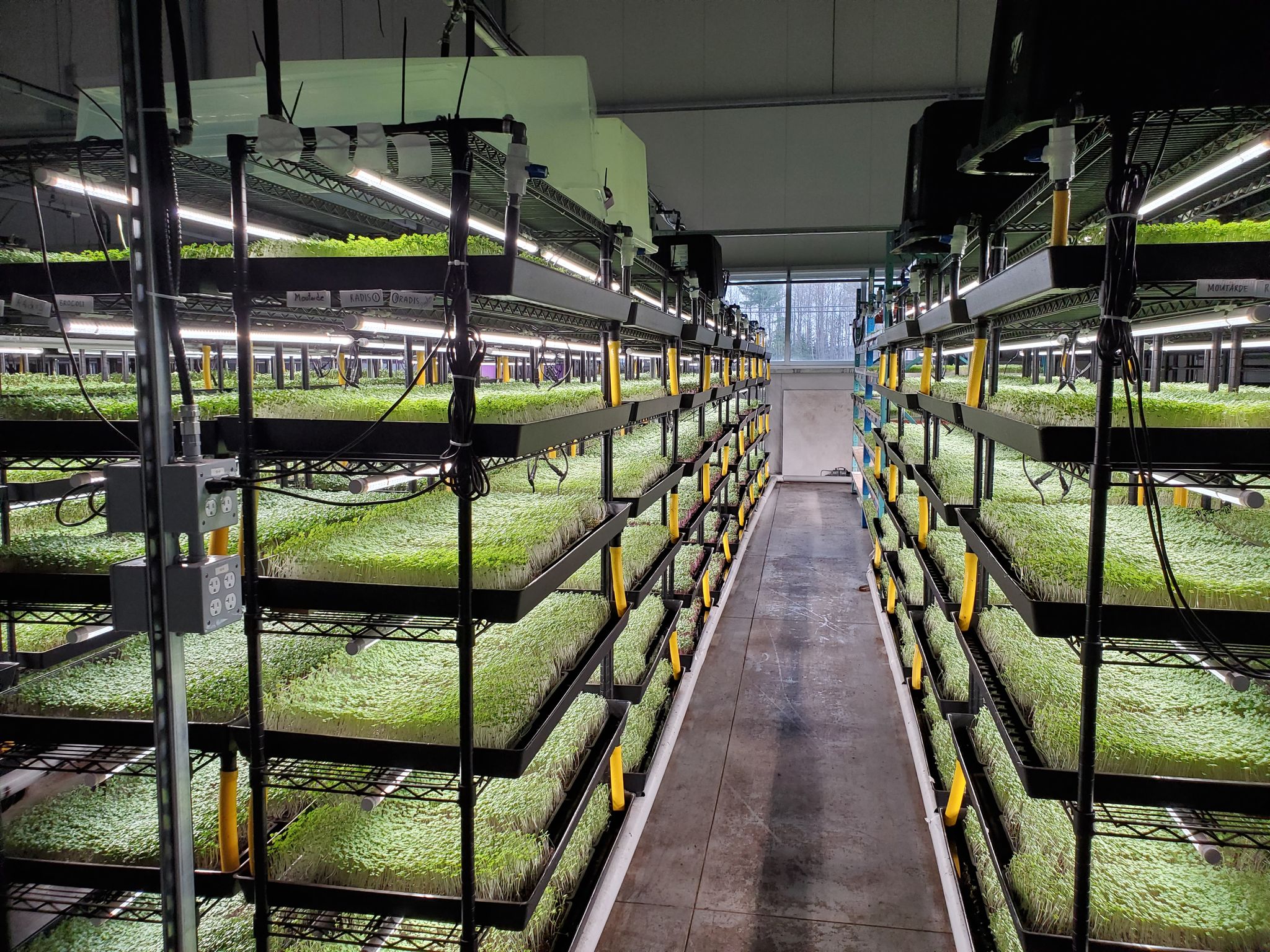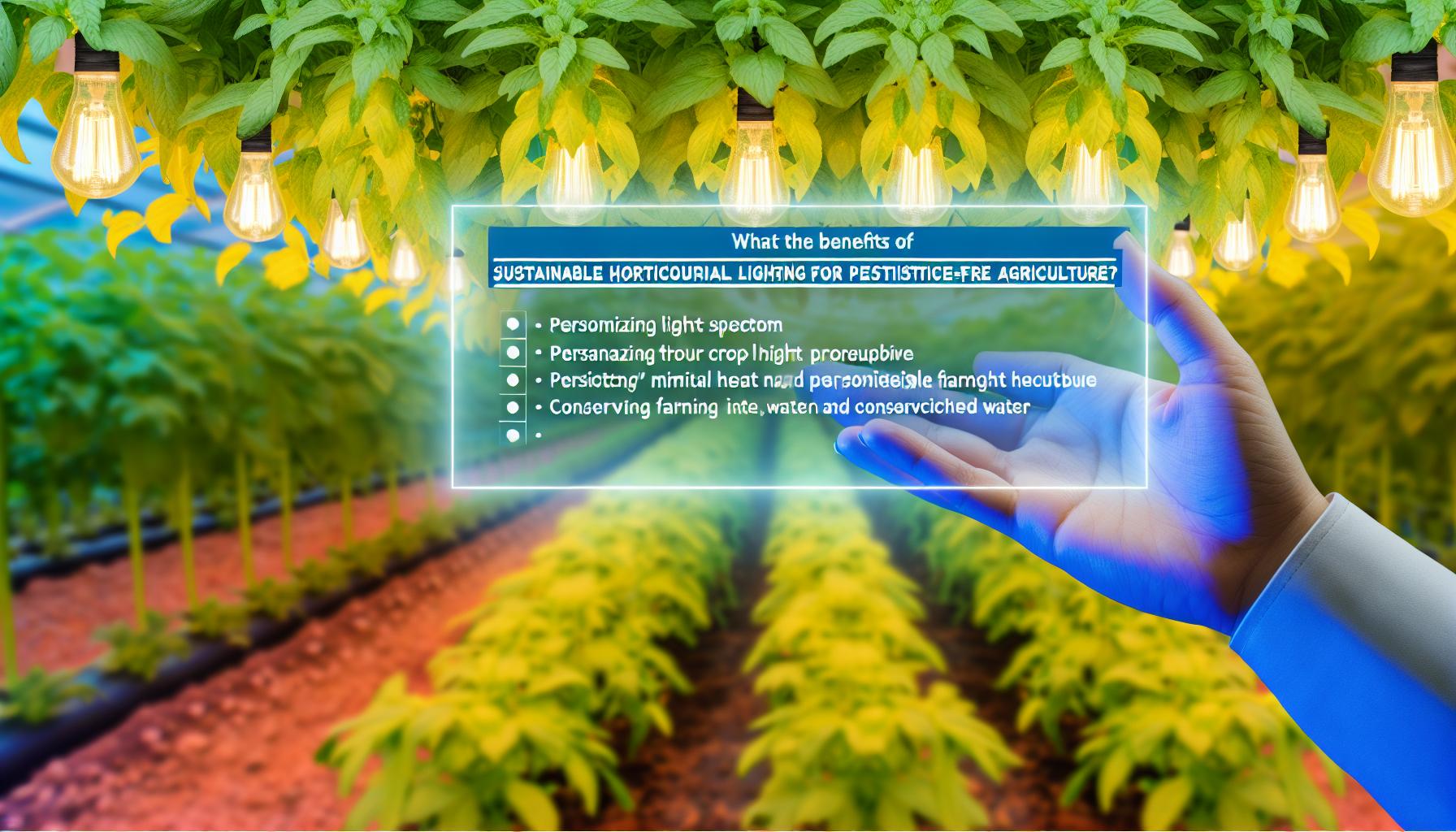
Welcome to our blog, where we explore the fascinating world of sustainable horticultural lighting and its key benefits for pesticide-free agriculture. Sustainable horticultural lighting plays a crucial role in optimizing crop growth and enhancing sustainability in agriculture. By providing a customized light spectrum, this innovative technology promotes healthier plants and higher yields while reducing the need for harmful pesticides.
One of the most popular choices for sustainable horticultural lighting is LED grow lights. These efficient lights not only improve crop quality and yield, but they also consume less energy compared to traditional lighting systems. Their low heat emission is particularly beneficial for controlled environment agriculture, enabling farmers to grow crops indoors without risking heat damage.
Furthermore, sustainable horticultural lighting contributes to reducing overall energy consumption in agriculture, making the industry more environmentally friendly and cost-effective. The use of LED grow lights in vertical farming and other indoor farming methods supports water conservation efforts and encourages responsible horticultural practices.
Throughout this blog, we will delve deeper into the various advantages of sustainable horticultural lighting, from its impact on crop yield improvement to its role in promoting water conservation and sustainable growth practices. Stay tuned for in-depth discussions on customized light spectrum, energy efficiency, and the future of pesticide-free agriculture!
What is Sustainable Horticultural Lighting and How Does it Customize the Light Spectrum for Crops?
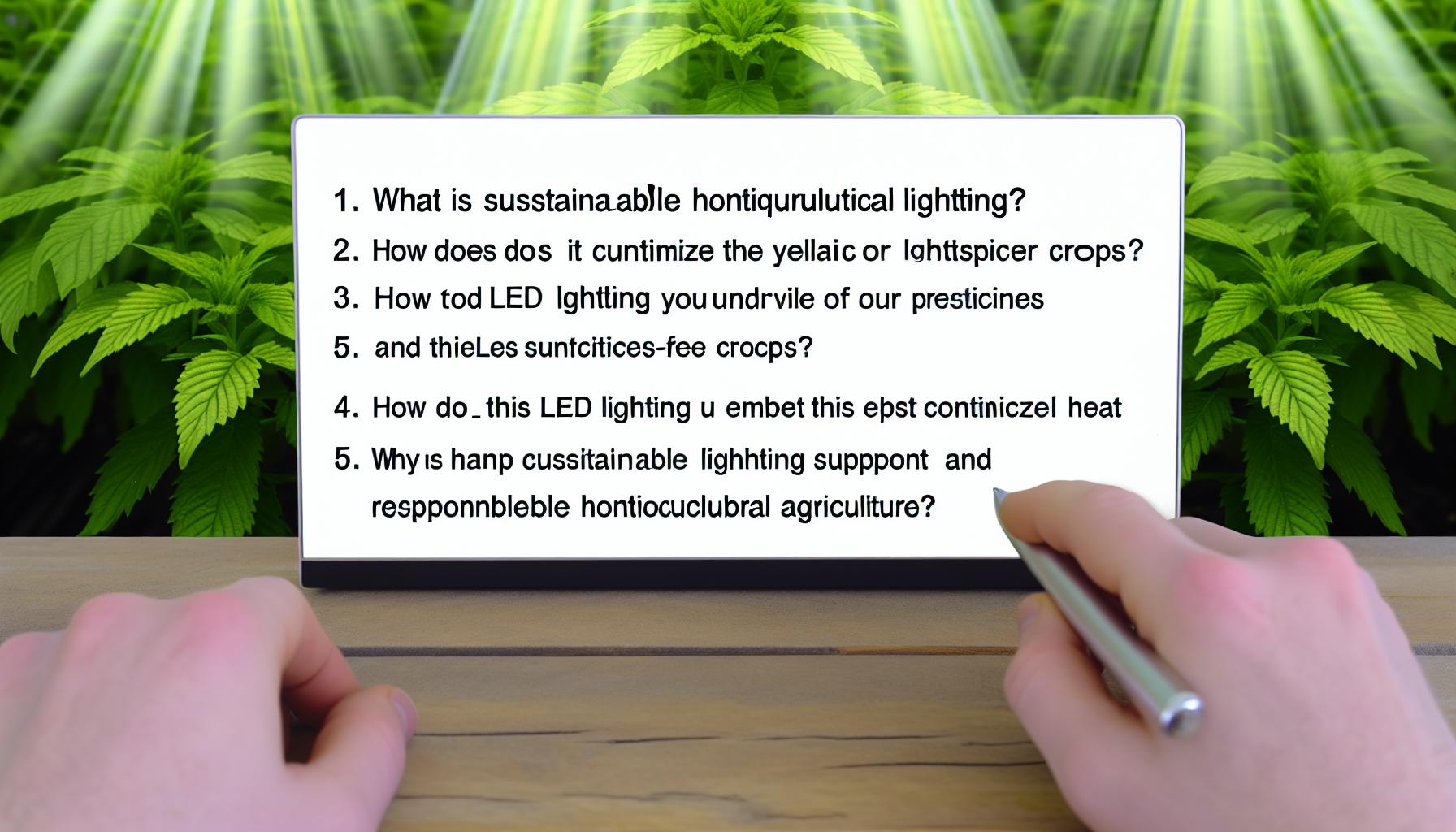
Sustainable horticultural lighting plays a crucial role in modern agriculture by providing energy-efficient light tailored to the specific needs of plants. Unlike traditional lighting, sustainable solutions optimize the light spectrum to boost plant growth while minimizing environmental impact.
These systems customize the spectrum by emitting precise wavelengths that influence photosynthesis and plant development. By adjusting the balance of blue, red, and far-red light, growers can enhance crop yield, improve plant health, and reduce the need for chemical pesticides.
Moreover, sustainable lighting solutions support the goal of pesticide-free agriculture by creating conditions that strengthen plants’ natural defenses, lowering their vulnerability to pests and diseases. This approach aligns closely with the advantages discussed earlier in our key benefits section.
For those interested in the technical details and innovations behind these lighting systems, the Ambralight article on LED lighting’s efficiency in aeroponic agriculture offers an insightful perspective on the durability and spectral customization of LEDs.
By integrating sustainable horticultural lighting, growers not only enhance crop quality but also contribute to a greener, more sustainable agricultural practice.
How Does LED Lighting Improve Yield and Quality in Pesticide-Free Crops?
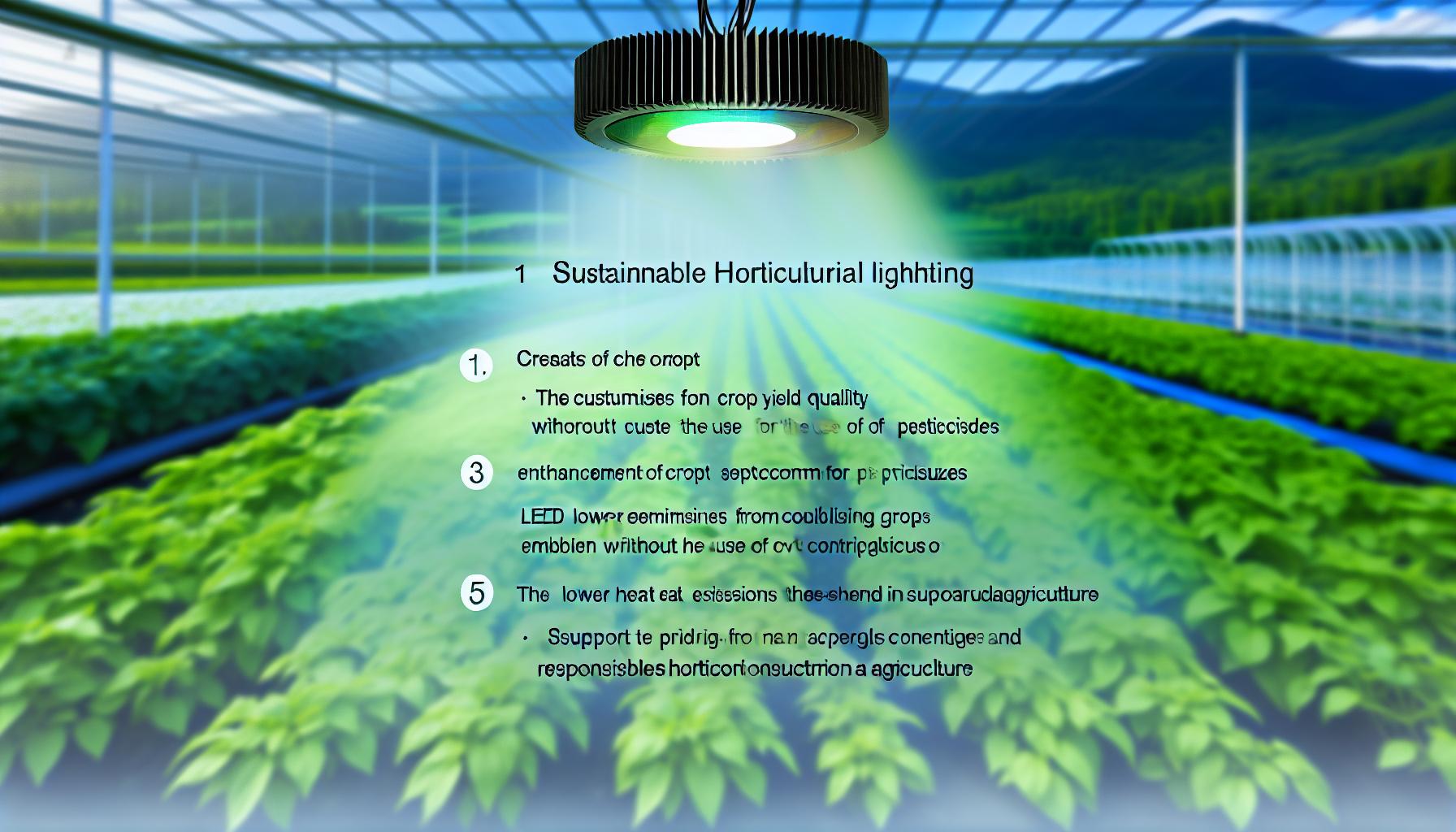
LED lighting plays a crucial role in enhancing the growth and quality of pesticide-free crops by providing precise light spectra tailored to plant needs. Unlike traditional lighting, LED systems can optimize photosynthesis, leading to healthier plants and higher yields.
Because LEDs emit less heat, they reduce plant stress and minimize water evaporation, which creates a more stable growing environment. This is especially beneficial for pesticide-free agriculture, where maintaining plant health naturally is a priority.
Moreover, the flexibility of LED technology allows growers to control light intensity and duration, which helps synchronize growth cycles and improve crop consistency throughout the year. This supports sustainable practices that avoid chemical inputs.
For more details on sustainable lighting impacts, check our section on key benefits of sustainable horticultural lighting. Additionally, leading research highlights how advanced lighting solutions are revolutionizing indoor farming (source).
In summary, LED lighting not only boosts yield and quality but also supports environmentally friendly farming by reducing the need for pesticides, making it an indispensable tool for modern, sustainable horticulture.
Why do LEDs emit less heat and how does this benefit controlled agriculture?
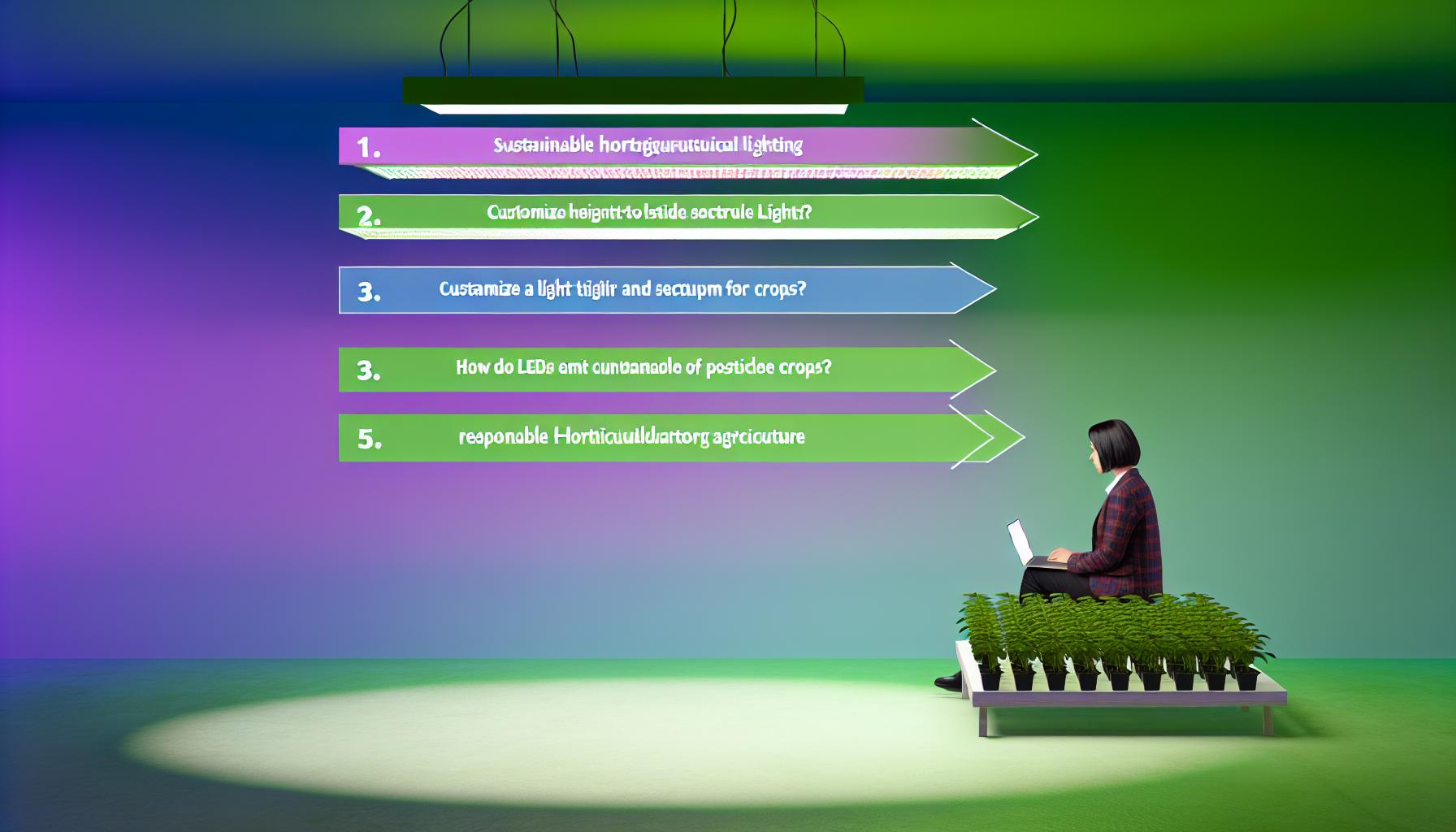
LEDs produce significantly less heat compared to traditional lighting systems such as incandescent or high-pressure sodium lamps. Their energy-efficient technology converts most of the electricity directly into light rather than heat, which is ideal for controlled agriculture environments.
This lower heat output reduces the risk of overheating plants, enabling growers to maintain optimal temperatures and minimize water evaporation. In turn, this fosters healthier plant growth without added stress or the need for excessive cooling systems.
Additionally, the decreased heat generation allows LED lights to be positioned closer to crops, ensuring more uniform and targeted light distribution. This precise control contributes to improved photosynthesis efficiency and higher yields in controlled environment agriculture.
For more details on how LED lighting supports modern farming, visit this in-depth resource on LED roles in agriculture.
How Does Sustainable Horticultural Lighting Help Reduce Energy Consumption in Agriculture?
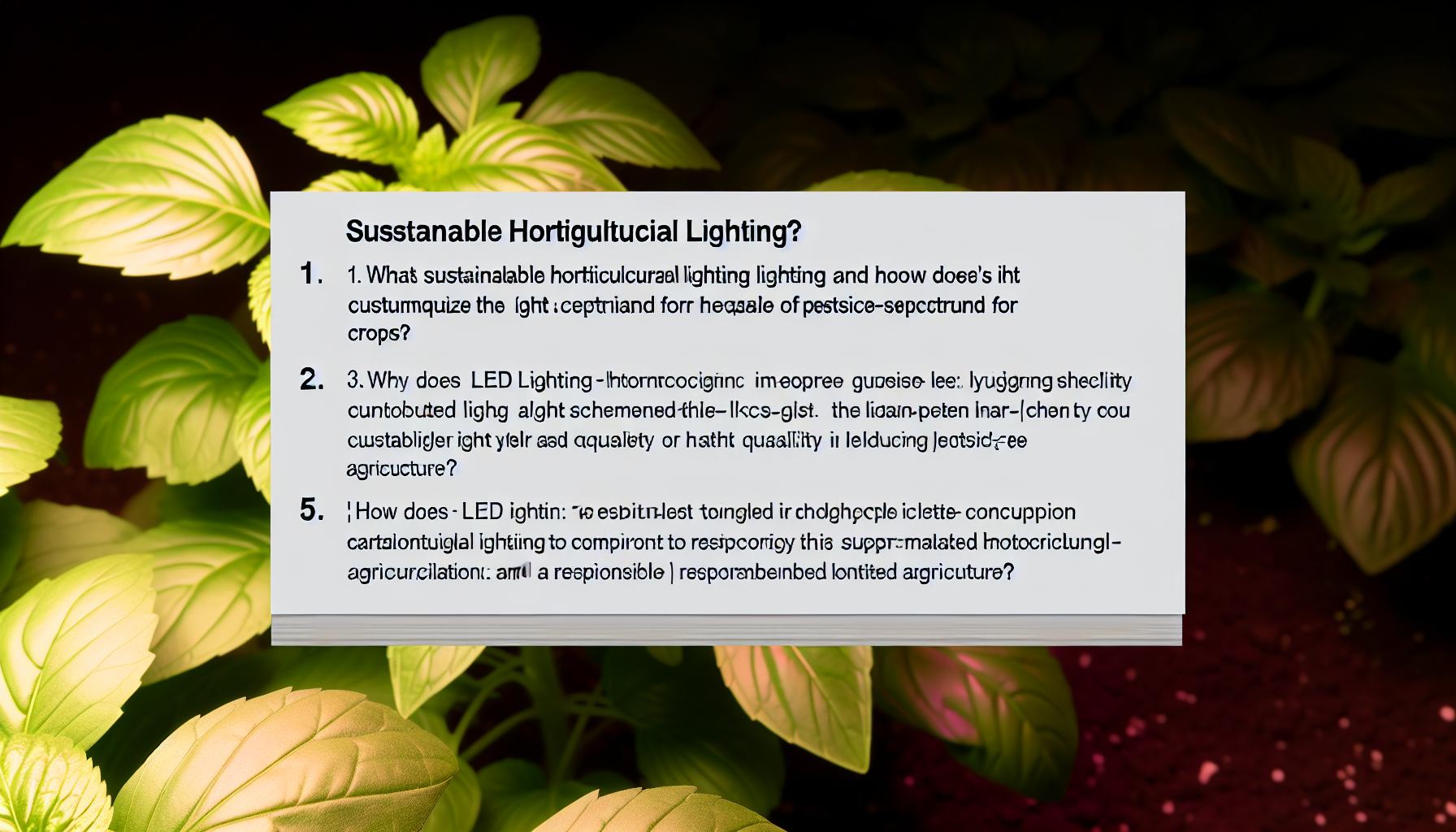
Sustainable horticultural lighting plays a crucial role in reducing energy consumption within modern agriculture. By utilizing advanced LED technologies, these lighting systems consume significantly less electricity compared to traditional lighting methods, allowing farmers to maintain optimal plant growth conditions while minimizing power usage.
Energy-efficient lighting not only reduces operational costs but also decreases the environmental footprint of farming activities. This is essential for promoting pesticide-free agriculture, where clean and responsible energy use supports healthier ecosystems.
For growers interested in further optimizing their agricultural practices, our previous section on sustainable horticultural lighting benefits offers valuable insights into achieving energy savings without sacrificing crop quality.
Additionally, the Design Lights Consortium provides comprehensive guidelines and standards for implementing effective horticultural lighting solutions, which can be explored on their official site here. These resources help ensure that farmers select lighting systems that deliver maximum efficiency and sustainability.
By adopting these sustainable lighting technologies, agricultural operations contribute to a more energy-conscious future while supporting the growth of pesticide-free, high-quality crops.
How Does LED Lighting Support Water Conservation and Responsible Horticultural Growth?
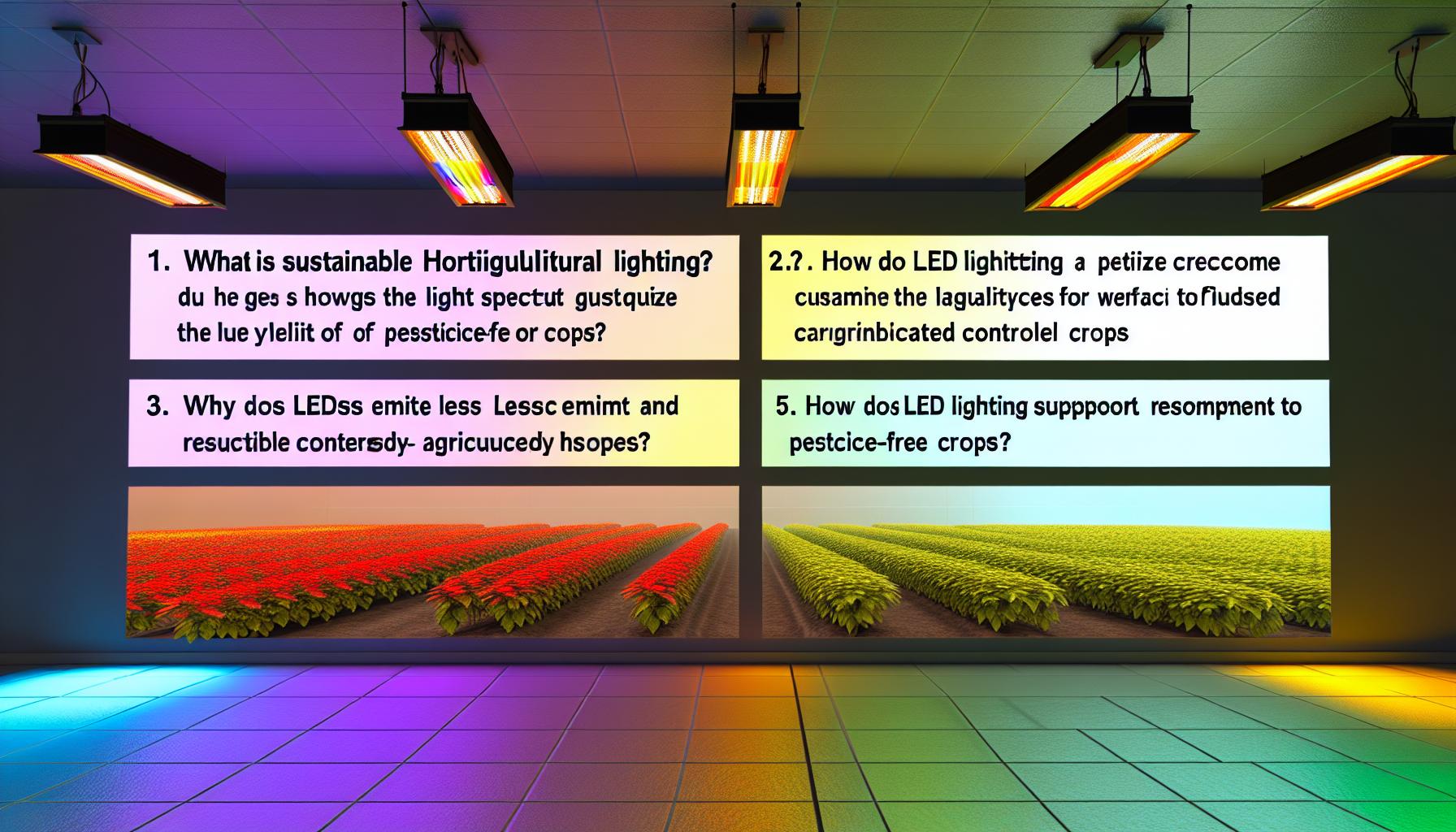
LED lighting plays a crucial role in promoting sustainable horticulture by significantly reducing water consumption. Unlike traditional lighting, LEDs emit less heat, which minimizes water evaporation from soil and plants, ensuring that precious water resources are preserved.
Furthermore, the precise spectrum control offered by LED lights enables optimized plant growth, allowing growers to regulate water uptake more efficiently. This targeted approach supports healthier plants with lower water needs, contributing to overall resource efficiency.
For those interested in advancing their sustainable horticulture practices, exploring our section on sustainable lighting strategies can provide valuable insights.
To learn more about the technological advancements in LED grow lights and their impact on indoor farming, you can visit this comprehensive resource.
By integrating LED lighting solutions, farmers can achieve responsible growth with reduced environmental impact, fostering a pesticide-free and water-conscious agricultural future.
In conclusion, sustainable horticultural lighting offers a multitude of benefits for pesticide-free agriculture. By customizing the light spectrum for different crops, LED lighting enhances yield and quality while reducing energy consumption. The minimal heat emitted by LEDs promotes controlled agriculture, and their water conservation properties support responsible horticultural growth. Overall, sustainable horticultural lighting is paving the way for a more efficient, environmentally friendly approach to agriculture, ensuring a brighter and more sustainable future for our food production.

